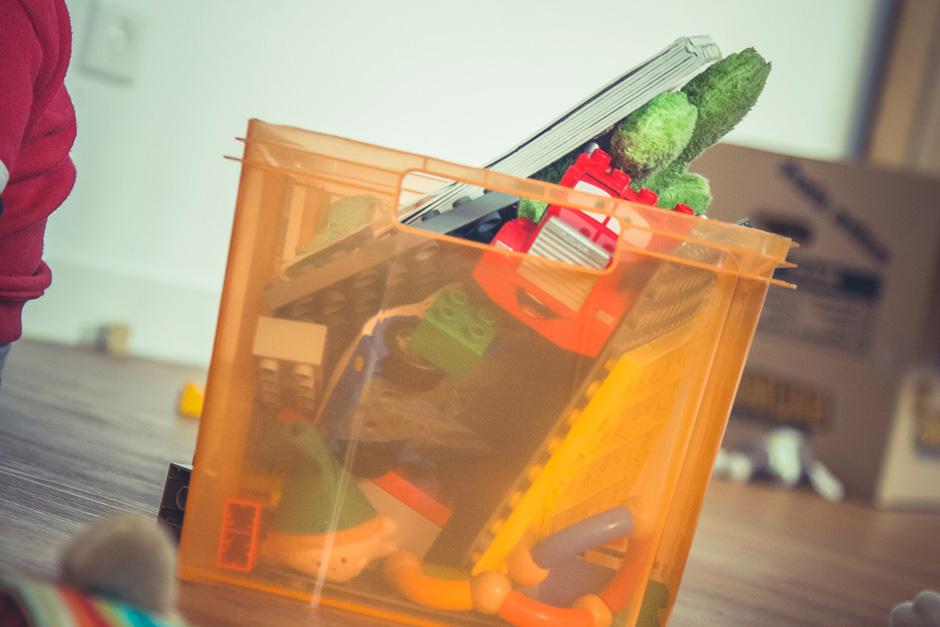Amongst the many delights that a new life brings to the family home – laughter, cuddles, all the words you see stenciled on people’s walls on Instagram these days – the most delightful has to be the clutter fills that every corner of your once-immaculate home, right?
You could spend every waking moment of your precious life tidying up after the little angels, but that would be like herding cat litter, like painting the Forth, fifth, sixth and seventh bridges. Your mental health couldn’t survive.
So, is it time to call on the magic of the New Year’s Resolution turned Netflix gold, Marie Kondo, to bring some order to the swirling chaos of casually weaponised Lego, half-read picture books, and free-range jigsaw pieces?
Well, it depends a bit on who you ask…
Mamma Kondo
Back when her first book, The Life-Changing Magic of Tidying, came out in 2014 a chorus of parental voices rang out, ‘this will never work with kids!’ But then, Marie had a daughter, and then another, and presumably both her kids must have sparked at least some joy, as she has kept them around.
And she has kept up with her tidy, joyful lifestyle, training up and involving both her children in the process. So, how does she get them to play along? Does she literally get them to play along?
Here are 10 Konmari-inspired tips to wrestle some control of your floor space and develop some good organisational habits in yourself and your little Konverts. (Yes, that’s really what they’re called.)
Ten Konmari Tips for Parents
- Get your kids to join in. It’s easy to decide to wait until the kids have gone to bed before you tackle the huge heap of laundry that’s been on the floor since last Thursday, but if you can get their nimble little fingers working for you. It means you spend time with them, which little kids (almost) always appreciate, and maybe instil some sense of fun while they learn good habits.
- Store their clothes upright, not stacked, once you’ve folded them. It’s like creating a filing cabinet for clothes. The kids can see all of their clothes, so their outfits get proper rotation, and it will be easier for them to take clothes in and out.
- Everyone is responsible for their own stuff. Maybe the most useful lesson, and almost certainly the most obvious.
- If it’s their stuff, they should choose exactly what their stuff is. Respect what the kids value and what they don’t. You may get the ever-living creeps from the poorly-stuffed, one-eyed stuffed zebra they cuddle in bed every night, but if it brings them joy, you know the drill.
- Don’t feel guilty about sentimental items. Okay, so they painted a picture of a cat for you in kindergarten, but do you need to keep it in that drawer in your desk? I mean, you’re only taking it on trust that it is a cat. If you feel bad about throwing something in the recycling that your child made for you at school for Mother’s Day, chances are they weren’t that invested in it themselves. If they were, it probably wouldn’t have looked the same as everybody else’s in the class.
- You don’t have to throw everything in the bin/charity-shop pile. If you’re planning on more kids, keep those items of clothing that you’d be excited about seeing them in, but not the bags full of white sleepsuits. You can always buy or borrow more baby stuff.
- Take the opportunity to teach about gratitude. This is the bit that has had most people talking, saying ‘Thank you’ to your soon-to-be-disposed-of belongings. It certainly sounds a little weird, but if you want to foster a sense of gratitude in your children, this makes sense. If you can feel guilty about belongings, why not grateful? See the extra tips for combatting the tide of children’s artwork below.
- Make it fun. Wait, maybe this is the most obvious tip.
- Give everything a ‘home’. Marching into a room and leaving the vague instruction of ‘tidy up the room, please’ probably isn’t enough. But if every toy, every shoe, every felt-tip pen has a home to go to, then your little ones have a fighting chance. It might even help make it more of a game.
- Better yet, have an organised time for tidying/organising so that things stay ship-shape. Break down the tasks into easy stages, and the work will be easier.
Child Artwork Creep

What better represents the mixed emotions of decluttering better than your fridge door, its hinges groaning under the weight of years and years of pieces of art? You can try and confine the art to one area of a wall but what do you do when it starts to fill up?
You can take a picture of it to keep as a memento – at least until the Digital Marie Kondo turns up in a few years. But what then?
You could frame them and put them on the wall somewhere else. You could send them to relatives, spread the load out across the country.
Apparently, in the States you can turn a piece of your kid’s artwork into a legal postage stamp. You can use another company to put them onto a tote bag. You can even turn it into custom wallpaper.
There’s even an artist on Etsy by the name of Lizette Greco who can turn a drawing into a 3D stuffed toy – for $400 or so, minimum.
Come on. It can’t work. Can it?
If it does, think of all the arguments and daily stresses that will be avoided. The kid that will grow up treasuring their gifts and carefully putting things away every night. The floor you can walk across at night without impaling your foot on something sharp and plastic.
But if it doesn’t work out, don’t worry. The last thing parents need is another thing to fail at – same goes for the little ones. After all, you can see everything in the floordrobe too, right?




Leave a Comment: